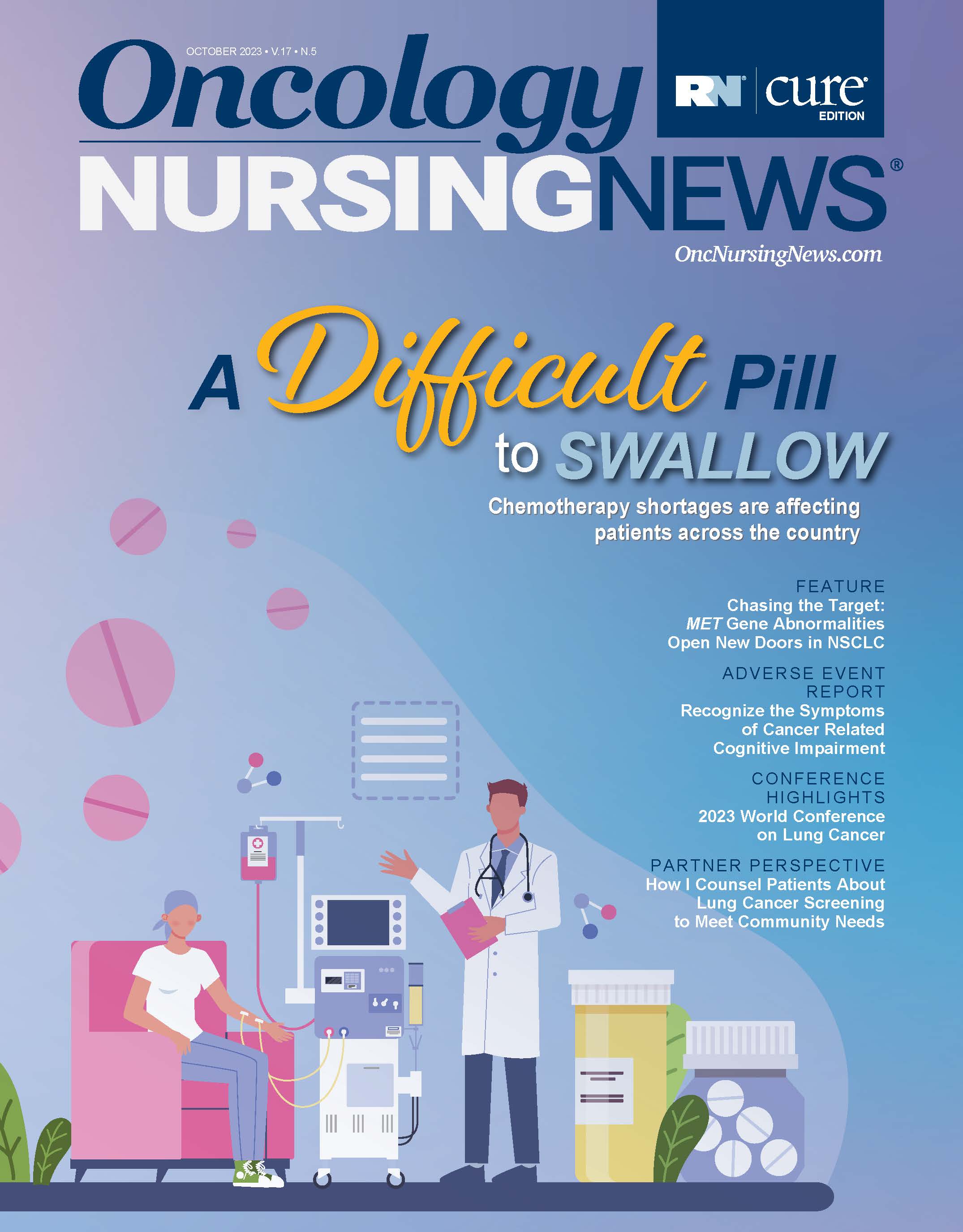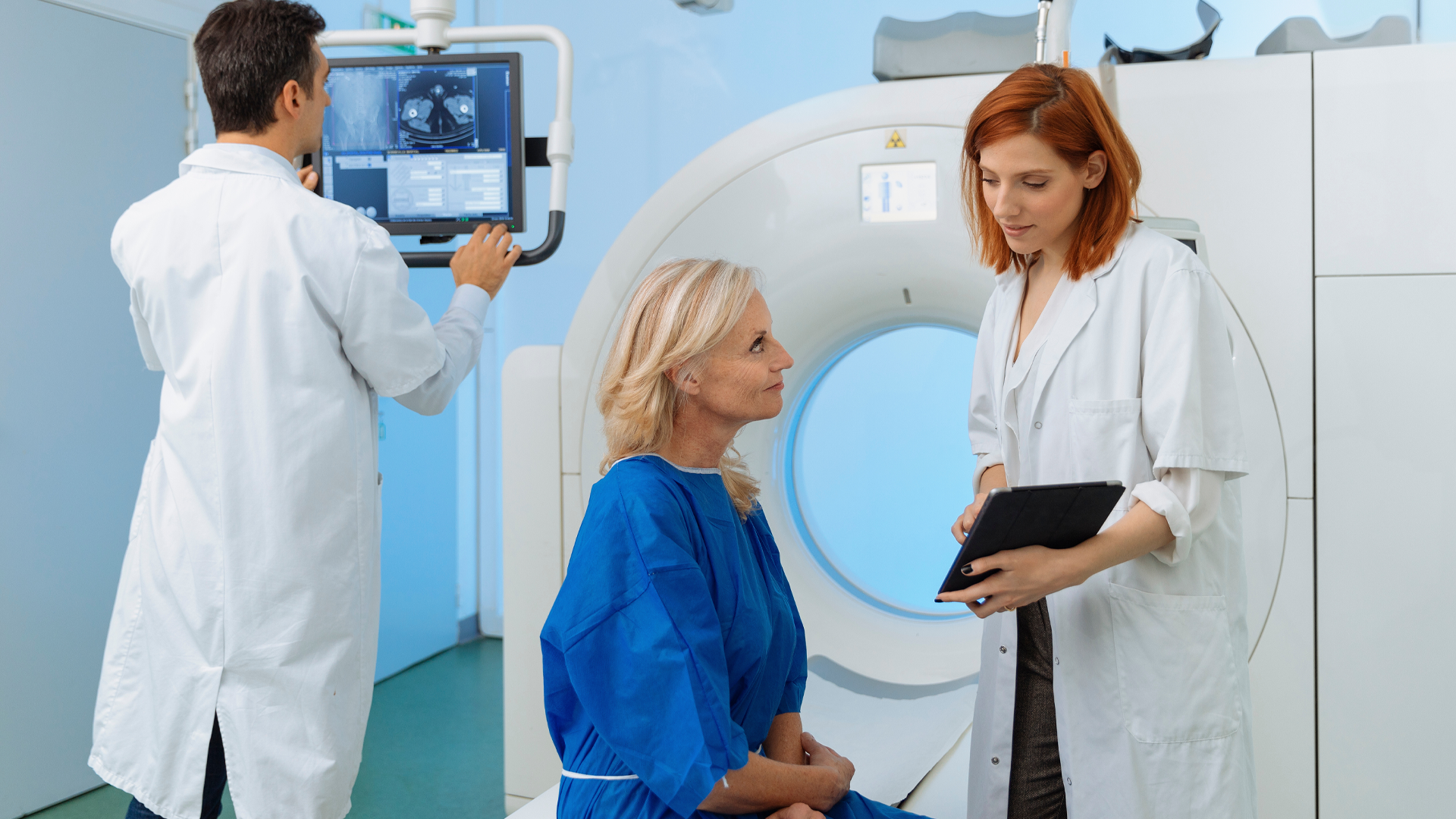Simple Interventions Can Help Oncology Staff Better Communicate With Limited-English Proficiency Patient Populations
Linda Bloom, MPA, RN, OCN, explains how amplifiers and audio interpreter tablets can be vital resources during cancer care.
Simple Interventions Can Help Oncology Staff Better Communicate With Limited-English Proficiency Patient Populations

Oncology staff need access to language assistive devices to help them better communicate with patients who have limited English proficiency, according to Linda Bloom, MPA, RN, OCN.
“People need to get on board with using interpreters,” she said. “When I was doing a literature review about this [topic], it seems to be that when staff is given the resources, they will use them.”
Bloom, who works on the main perianesthesia unit and with the interventional radiology presurgical center at Memorial Sloan Kettering Cancer Center, recently presented research on the benefit of assistive devices and how they elevate the quality of cancer care that nurses can provide. Her research was presented at the Oncology Nursing Society (ONS) Congress and published in the Clinical Journal of Oncology Nursing.1,2
In an interview with Oncology Nursing News®, Bloom walked through the benefits of these interventions, highlighting key examples of how they provided better care for patients, and underscoring the importance of using audio interpretation for patients with limited English, rather than relying on family members to interpret.
“It really helped improve our start times and improve our communication,” she said. “It was invaluable.”
Oncology Nursing News: What got your team interested in using novel devices to help tackle language barriers?
Bloom: I am going to give credit to the language assistance program. How this all started was, back in 2015, perioperative administration had an interest in improving the start times for first-case hours. Memorial Sloan Kettering is in New York City, so we have a lot of English-as-a-Second-Language patients. As you know, patients with cancer may have had tricky ostomies, laryngectomies, chemotherapy—[all of] which can impact hearing and vision.
We have a very long presurgical assessment [and in] our patient population, we have a lot of limited-English–proficient patients. Administration wanted to push for all first-case operating rooms to be ready to go to the operating room at 7:15 AM. It was really hard; we couldn't do it. People were relying on family members and that's not a great option—healthcare providers do it all the time [but] it is not ideal. We were trying to get interpreters, [but] there just are not a lot of in-person interpreters who want to arrive to work at 5:30 in the morning, and some of the languages that we need are what are called “low-diffusion” or “rare languages.” It was hard to find people.
We reached out to the language assistance program. They came to us, they met with the nurse leader at the time and a few of us who were interested in improving communication. They came up with a program to give us more interpreter options and trained us on how to use them. Between a series of in-services, they kept introducing new technology.
Can you share an example of how this technology helped improve communication?
“Patient Jones” was 83 and came from an inpatient unit to the interventional radiology presurgical center for a liver biopsy. When patients come from the outside to our presurgical center, we try to get care-partners to take home their valuables. But very often they don't have care partners, so we ask that all their belongings are locked up in the locker in their room. [This includes] hearing aids, glasses—any assistive device that we are afraid to lose.
This patient came to the interventional radiology presurgical center. The nurse started to try to go through our very long assessment. The charge nurse heard what sounded like a shouting match. The patient could not hear. And the nurse really could not scream because there were other patients around.
The language assistance program had given us 2 language assistance resource boxes and clear masks for lip reading, which were incredibly helpful. In the resource boxes, there was an amplifier, which had a microphone and earpiece. There were whiteboards. There was a magnifier for people who were visually impaired. There were a number of different kinds of low-tech assistive devices. The amplifier was amazing.
The charge nurse [had] heard the screaming match and ran to get the amplifier and set it up. The nurse [then] easily asked the questions, and the patient easily answered the questions. When the patient had to go to the room for the procedure. She clutched the amplifier and the earpiece and tried to grab the mic and said, “You cannot take this away. I have not been able to hear since I was here.”
We could not let the patient take ours, but the charge nurse emailed the language assistance program and got her one.
Do you have any examples of how you were better able to understand a patient’s situation by leveraging these assistive devices?
“Patient Smith” was 78 years old. He spoke Creole. He also was legally blind. He lived alone. He was having a procedure for his prostate cancer. He had an aide who did speak Creole, but Medicare would only pay for 5 hours a day. The rest of the day, he was alone [and] not able to do much, because he was blind. His family lived all over the world. He was afraid to visit them because of the political climate; he was afraid he would never get back to this country.
In our first language assistance in-service, they gave us a second audio interpreter. We could use it to call a number on our smartphones or our own phones, and just put it on speaker. The nurse used the newest audio interpreter, and [we] got a Creole language speaking interpreter [on the phone].
They were going through the psychiatric assessment questions. All of a sudden, the patient got quiet. The interpreter was listening. The nurse was listening. The nurse asked the questions [from] our list of suicidal ideation questions. The interpreter asked, the patient answered, the interpreter thought about it and then said, out loud, “The patient told me that he wanted to call 911 the other week because he was not sure he wanted to live anymore.” I immediately knew we had to get social worker involved. I got case management involved too.
We uncovered something very hidden just because we used an interpreter. That is important. I think people do not realize how important that is.
Does language-assistive technology need to be complex to be effective?
Some of it is very low-tech; [for example,] a whiteboard for a patient who is nonverbal. I remember when Language Assistance gave us the resource box, it came with 3 or 4 whiteboards. On interventional radiology, endoscopy, in the presurgical center, the whiteboards were just flying. When we asked for more, the supervisor said, “What, are you teaching school?” I said, “The patients want them.” People do not realize it's easier than pen and paper, believe it or not, because you can erase it and you can write more.
Voice recorders for visually impaired patients so that they can listen to teaching instructions; clear masks for lip reading; these are all simple things. It was my nurse leader who said to me one day, “I cannot have staff shouting with patients. They need to be able to read lips, but we have to wear masks.” So, we contacted Language Assistance and they sent us boxes of clear masks—which flew like hotcakes. It is things that are so simple, but so meaningful.
You mention that using family members as interpreters is not ideal. Why is that?
Trained medical interpreters understand medical terminology and should be used, especially when a patient must be fully informed of the procedures they will need to have or the adverse effects that may occur.
When I was presenting at ONS, one of the nurses who was listening said she had a patient who had her child interpreting—a 10-year-old—through the whole process. By the end, the child had to have therapy; it was very traumatic.
Family will filter. They will tell patients what they think they should know vs what they really should know. They will filter what the patient says to you. It is not ideal. It seems easier. But it is really not in the long run. You create more problems, and you really do not uncover what you need to. Communication assistive technology gives these patients a means to have their own voice.
References
- Bloom L. Nurses take on language access. Presented at 48th Annual Oncology Nursing Society Congress. April 25-30, 2023; San Antonio, TX. Accessed August 17, 2023.https://ons.confex.com/ons/2023/qi/eposterview.cgi?eposterid=2528
- Bloom L. Improving communication for surgical patients with cancer with limited English proficiency. Clin J Oncol Nurse. 2023;27(4):359-363. doi:10.1188/23.CJON.359-363





